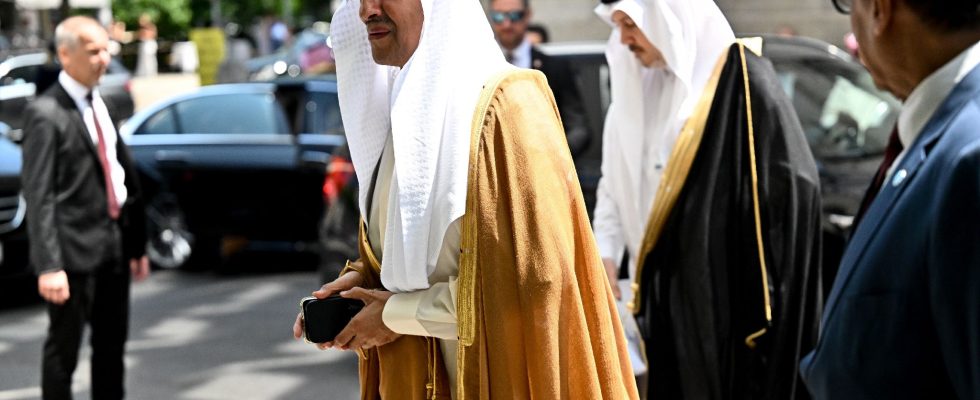Everyone goes with their little prognosis. Vienna is hosting the biannual meeting of the Organization of the Petroleum Exporting Countries (OPEC) this Sunday, June 4. The group, made up of thirteen countries located in Africa, South America and Asia, is responsible for ensuring that oil producers derive the greatest benefits from its exploitation. In total, OPEC members have 70% of oil reserves, and flood the market with nearly 40% of the black gold traded. In Austria, they were joined by ten other countries, members of OPEC +, also major crude producers, first and foremost Russia.
The stated mission of the meeting of the day is to find a parade to the spectacular drop in the price of the barrel. Brent, the benchmark for crude in Europe, is currently trading at $76 a barrel, and its US equivalent, WTI, at $71 – a far cry from the peaks recorded in March 2022 at the start of the conflict in Ukraine (nearly $140 ). This meeting, the second in Vienna since 2020, started at the beginning of the afternoon, about three hours behind the initial program. The Emirati prince Souhail ben Mohammed Al-Mazrouei, announced “impatiently awaiting a decision which will make it possible to balance the market”.
Drive prices up again
To reverse the trend, member countries could decide to reduce production and tighten quotas. Reducing supply would mechanically increase prices. According to wall street journal, “a reduction in production of up to one million barrels per day is on the table”. The economic daily nevertheless specifies that not all members of OPEC are in favor of such a contraction, for fear that a slowdown in the world economy will reduce demand for crude.
The recourse – still hypothetical – of OPEC to this lever would not be a first. In 1973, a significant reduction in production was one of the causes of the first oil shock. The price of a barrel of Brent had quadrupled at the time. More recently, at the beginning of April, the group had already reduced its production by around 1.2 million barrels daily, to the surprise of observers. A short rise in prices was then observed before the course returned to normal, the fault of a context of global economic recession.
Tensions between Moscow and Riyadh
In Vienna, OPEC wants to show a united front. But during the conference, two giants clash over the method. Saudi Arabia, seen as the unofficial leader of OPEC, wants to keep crude prices high above $80, according to Bloomberg. The objective is to allow Ryad to balance its budget. Russia, meanwhile, can only export one barrel at a price of $60 or less, the fault of Western sanctions. During their last major disagreement in March 2020, Russia refused to cut into its production to support prices dragged down by the Covid-19 pandemic. Ryad had then flooded the market with oil, permanently driving down prices.
However, the outcome of the meeting remains very uncertain. Little information about the content of the meeting does not filter. The journalists of Bloomberg, Reuters and wall street journal, traditionally invited to the summits of the group, were not this time. “No reason was given for the decision, for which there is little precedent in OPEC history,” explain Bloomberg.
